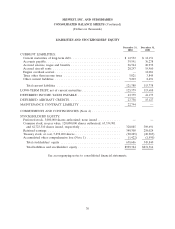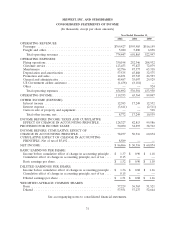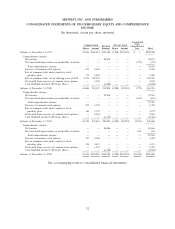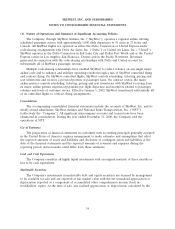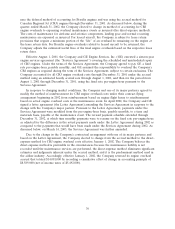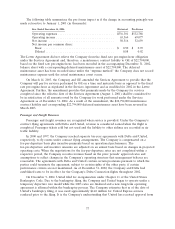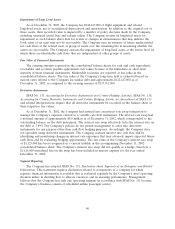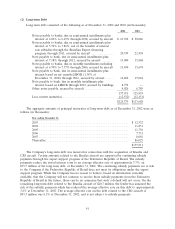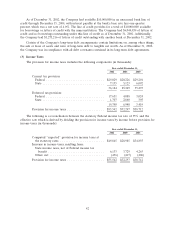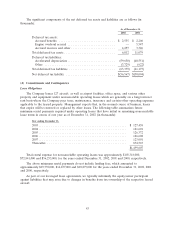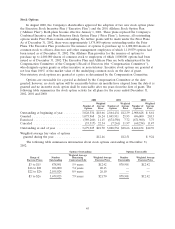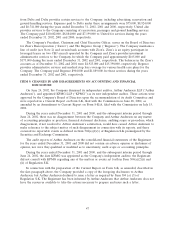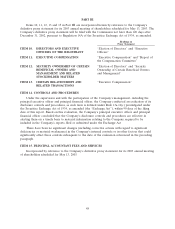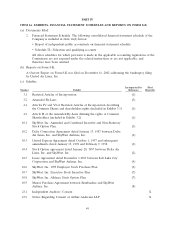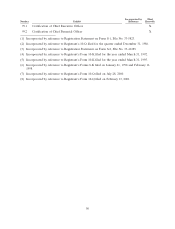SkyWest Airlines 2002 Annual Report Download - page 44
Download and view the complete annual report
Please find page 44 of the 2002 SkyWest Airlines annual report below. You can navigate through the pages in the report by either clicking on the pages listed below, or by using the keyword search tool below to find specific information within the annual report.Impairment of Long Lived Assets
As of December 31, 2002, the Company has $344,647,000 of flight equipment and related
long-lived assets, net of accumulated depreciation and amortization. In addition to the original cost of
these assets, their recorded value is impacted by a number of policy elections made by the Company,
including estimated useful lives and salvage values. The Company reviews its long-lived assets for
impairment at each balance sheet date for events or changes in circumstances that may indicate the
book value of an asset may not be recoverable. The Company uses an estimate of future undiscounted
net cash flows of the related asset or group of assets over the remaining life in measuring whether the
assets are recoverable. The Company assesses the impairment of long-lived assets at the lowest level for
which there are identifiable cash flows that are independent of other groups of assets.
Fair Value of Financial Instruments
The carrying amounts reported in the consolidated balance sheets for cash and cash equivalents,
receivables and accounts payable approximate fair values because of the immediate or short-term
maturity of these financial instruments. Marketable securities are reported at fair value in the
consolidated balance sheets. The fair value of the Company’s long-term debt is estimated based on
current rates offered to the Company for similar debt and approximates $122,447,000 as of
December 31, 2002, as compared to the carrying amount of $137,911,000.
Derivative Instruments
SFAS No. 133, Accounting for Derivative Instruments and Certain Hedging Activities, SFAS No. 138,
Accounting for Certain Derivative Instruments and Certain Hedging Activity, an Amendment of SFAS 133
and related interpretations require that all derivative instruments be recorded on the balance sheet at
their respective fair values.
As of December 31, 2002, the Company had entered into an interest rate swap transaction to
manage the Company’s exposure related to a variable rate debt instrument. The interest rate swap had
a notional amount of approximately $8.8 million as of December 31, 2002, which corresponded to the
outstanding balance on the debt instrument. The interest rate swap effectively locks the interest rate on
the debt at 7.89%.The Company’s policies do not permit management to enter into derivative
instruments for any purpose other than cash flow hedging purposes. Accordingly, the Company does
not speculate using derivative instruments. The Company assesses interest rate cash flow risk by
identifying and monitoring changes in interest rate exposures that may adversely impact expected future
cash flows and by evaluating hedging opportunities. The fair value of the Company’s interest rate swap
of $1,125,000 has been recognized as a current liability in the accompanying December 31, 2002
consolidated balance sheet. The Company’s interest rate swap did not qualify as a hedge, therefore a
$1,125,000 unrealized loss on the swap has been included in interest expense for the year ended
December 31, 2002.
Segment Reporting
The Company has adopted SFAS No. 131, Disclosures about Segments of an Enterprise and Related
Information. This statement requires disclosures related to components of a company for which
separate financial information is available that is evaluated regularly by the Company’s chief operating
decision maker in deciding how to allocate resources and in assessing performance. Management
believes that the Company has only one operating segment in accordance with SFAS No. 131 because
the Company’s business consists of scheduled airline passenger service.
40


